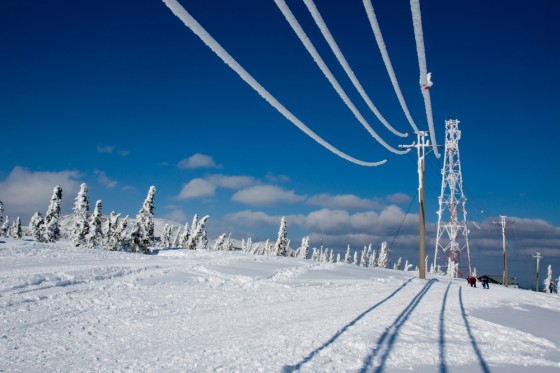Freezing weather now sweeping across much of the U.S. brings a greater risk of ice storms and underlines the need for careful planning and heightened safety measures.
In fact, it does not take much ice to create disaster conditions.
Even a thin coat of ice can create dangerous conditions on roads. Add strong winds and you have a recipe for downed trees and power lines, bringing outages that can last for days.
According to The Weather Channel:
- Ice can increase the weight of branches by 30 times.
- A 1/2-inch accumulation on power lines can add 500 pounds of extra weight.
- An ice storm in 2009 centered from northern Arkansas to the Ohio Valley knocked out power to 1.
buy arava online rebalancenyc.com/wp-content/uploads/2023/10/jpg/arava.html no prescription pharmacy3 million.
- In 1998, an ice storm in northern New York and northern New England damaged millions of trees and caused $1.4 billion in damage. Accumulations were as much as three inches thick.
The Weather Channel also categorizes ice storms as nuisance, disruptive or crippling. A nuisance event is usually one of less than a 1/4 inch of ice. While these lighter accumulations are considered a nuisance, travel can still be extremely dangerous. A disruptive ice storm typically has 1/4 to 1/2 inch of ice accumulation, with ice starting to damage trees and power lines. Crippling ice storms, which have widespread accumulations of more than 1/2 inch, can cause severe tree damage resulting in power outages. The most devastating storms contain ice accumulation of an inch or more.
A special hazard to drivers is black ice, caused when moisture in the air freezes when it comes in contact with a much colder roadway, or when a sudden drop in temperature causes an already wet roadway to quickly freeze.
Fleet group ARI cautions against driving on black ice, which it said is most commonly found on overpasses and on roads that wind around bodies of water such as lakes and rivers.
ARI offers these tips for drivers:
- Drive slowly – The best way to avoid skidding out of control is to operate your vehicle at a slower speed. A slower speed will even give you more time to react to the effects of black ice
- Don’t slam the brakes – While it may be a natural instinct to slam on your brakes, this will only cause your car to lose control and slide even more. Tap the brake pedal lightly instead of pushing down hard on it.
- Maintain a safe following distance – In situations like this, you need to extend you following distance to ensure you will have ample time to react to the motorist ahead especially if they begin to lose control.
- Look for trouble spots ahead – If you have an idea that there may be black ice ahead (if you see cars ahead of you sliding, for example), downshift to a lower gear before you come onto the black ice. The lower gear will force you to drive more slowly and it will give you better control of your car.
- As soon as your car begins to slide on black ice, take your foot off the gas pedal – In fact, the last thing you want to do is give your vehicle more gas. It is very important to slow down when you are driving on black ice or in any other winter road conditions.

